Many animal species are widespread and can be seen on almost any safari.
However, others are found in fewer areas and perhaps only in certain habitats, making them fundamentally more of a challenge to find. Some are natural secretive and/or nocturnal, in both cases making them harder to see.
If there is a particular animal (or bird) that you definitely wish to see on your safari, then it is important to know where the best places to see them are.
If you would like advice on where to see any specific species please call us on +44 (0) 1787 888590 to speak to one of our specialists or email us via our Contact Us page. However the following information will give you a good idea of where to see the most iconic African animals.
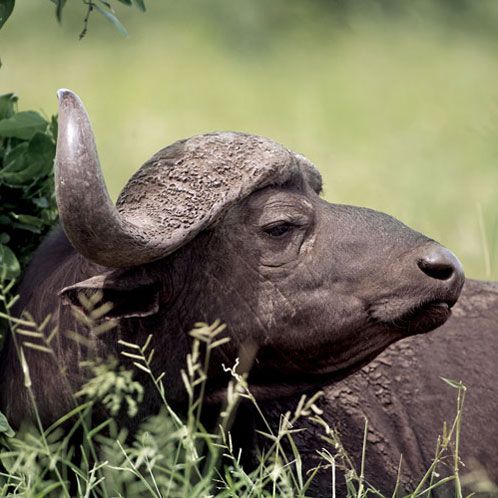
The Big Five
The Big Five (lion, elephant, buffalo, leopard and rhino)
There are not too many places in Africa where you are likely to see the Big Five in a short period of time, but probably the best chances are found in the private game reserves of South Africa, especially those bordering the Kruger National Park. Lion, elephant and buffalo are usually the easier species of the five to see, though of course lions can be elusive at times. Rhino can be easily seen in certain regions, but are not found everywhere, whilst leopards are perhaps the greatest challenge, even though they are very widespread. It is the possibility of viewing rhino and leopard so readily within the private reserves bordering the Kruger National Park which makes this region number one on the list (Sabi Sand, Timbavati and Thornybush are the key reserves here). Other good ‘Big Five’ reserves in South Africa include Madikwe, Phinda and a number in the Eastern Cape, including Kwandwe.
Outside South Africa it is possible to see the Big Five in various regions, including the Masai Mara, Lewa Conservancy, Meru National Park and Ol Pejeta Conservancy in Kenya, the Ngorongoro Crater and Serengeti National Park in northern Tanzania, and due to recent relocations of rhino, the Okavango Delta in Botswana. As many safari holidays are based on visiting more than one wildlife area, it is possible to design your safari so that you’ll see a wide range of different animals, including the Big 5 albeit not all in the same place.
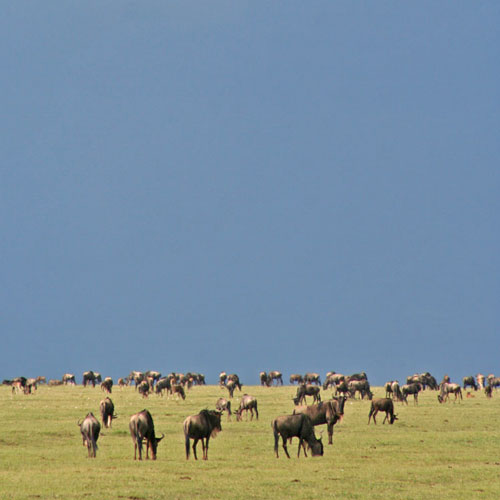
The Wildebeest Migration
The Wildebeest Migration
The great wildebeest migration is an incredible phenomenon that takes place across the open grass plains of Kenya’s Masai Mara and Tanzania’s Serengeti National Park. It is one of the great highlights of wildlife viewing in Africa. Please see our dedicated page on the Serengeti/ Mara Wildebeest Migration. Or you may also wish to visit our Masai Mara and Serengeti pages.
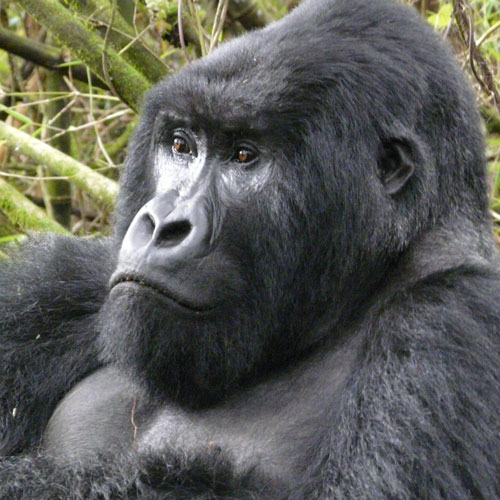
Mountain Gorilla
MOUNTAIN Gorilla
The mountain gorilla is an iconic African mammal that should be on any safari-lovers ‘tick list’. Trekking through the forests of Central Africa to find them is a very different experience to the more traditional vehicle based safaris across the plains, but if anything it offers more personal, up close experiences.
The best and only reliable places to see them are in Rwanda’s Virunga Volcanoes National Park and Uganda’s Bwindi Impenetrable Forest. For detailed information on seeing mountain gorillas, please see our dedicated page on Gorillas & Other Primates.
For specialist advice on gorilla trekking please call us and speak to one of our specialists on +44 (0) 1787 888590 or email us via our Contact Us page.
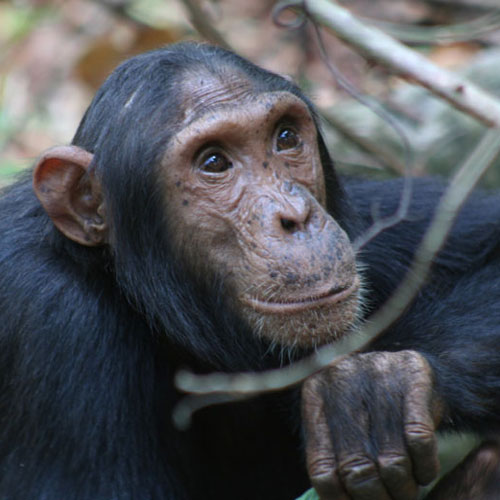
Chimpanzee
Chimpanzee
Watching chimps in the wild is a wonderful experience. They tend to be more active than their ‘gorilla’ cousins and being omnivores there is also the chance to see them hunt through the treetops – a truly ‘one off’ African wildlife experience. Two of the best places to see them are Kibale Forest National Park in Uganda or Mahale Mountains National Park in western Tanzania, though they can be seen in the wild elsewhere in Uganda and Tanzania, and also in Rwanda’s Nyungwe Forest National Park.
For more information on seeing chimpanzees, please see our dedicated page on Gorillas & Other Primates. For specialist advice on seeing chimps in Africa please call us and speak to one of our specialists on +44 (0) 1787 888590 or email us via our Contact Us page.
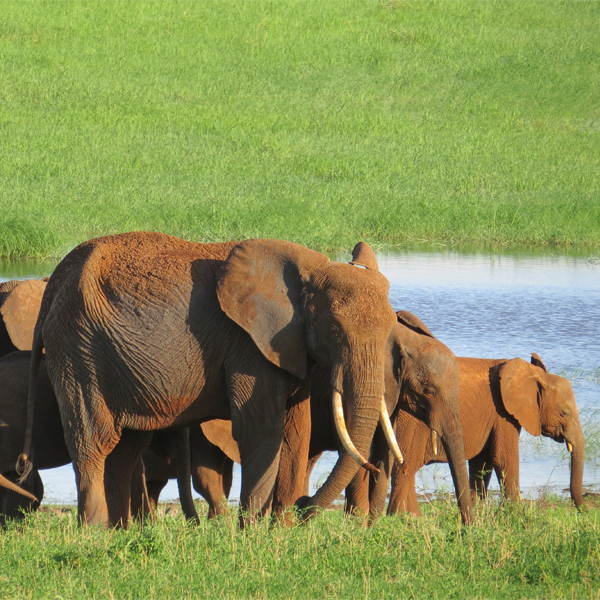
Elephant
Elephant
Elephants are one of Africa’s most interesting and awe-inspiring creatures, not just because of their size and ‘gravitas’ but also because of their matriarchal society, social interactions and their undisputed ‘intelligence’ that is displayed in their behaviour. Arguably the best places to see large numbers of elephants are Hwange National Park in Zimbabwe, Chobe National Park in Botswana, Amboseli National Park in Kenya and Tarangire National Park in Tanzania.
For more in depth encounters there are certain lodges that conduct elephant research in their area, and guest participation can be arranged. Or for closer encounters, in a handful of destinations there are some very well-managed elephant sanctuaries, providing critical care for orphaned and injured elephants, with the aim of rehabilitation into the wild.
For details of all the best places to view elephants in Africa, please link to our blog article on ‘The Best Places to see Elephant on safari in Africa’.

Rhino
Rhino
Rhino are fast becoming one of Africa’s most threatened creatures, but they can still be seen in good numbers throughout Kenya, South Africa and northern Namibia. In addition there are pockets where they can be seen in Tanzania, Malawi, Zambia, Zimbabwe and Botswana. Due to sensitivity regarding the poaching issue and crucial rhino conservation work, we do not think it is correct to list all the individual places where rhino can be seen, but if you are keen to see rhino on your safari please let us know and we can advise accordingly.
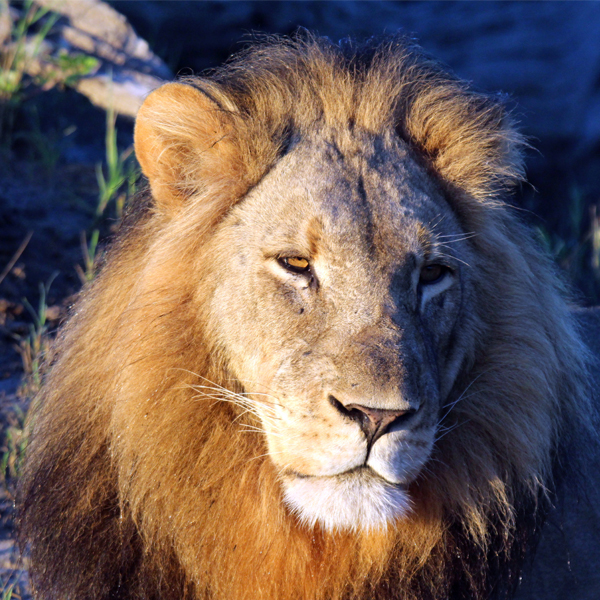
Lion
Lion
Lions are found throughout safari Africa and it is rare to visit a big game safari park or game reserve without them being present. How easy they are to see will depend on the particular region you visit, the time of year and how lucky you are! The best place for lion viewing is on the open grassland plains of the Masai Mara in Kenya and the Serengeti in northern Tanzania. Here prides can reach upwards of 20 individuals and the open habitat makes finding and viewing them relatively easy. The plethora of prey species and competition for territory leads to good chances of seeing them doing more than just lounging around (hunting, fighting, roaring, mating, playing etc.). The relative concentration of lion also means that you will have the chance to view several different prides, and with that a greater chance of seeing a range of ages, from young cubs to fully grown males.
Almost all other key big game areas throughout Kenya, Tanzania, Zambia, Zimbabwe, Botswana and South Africa can provide super lion sightings. However, in Namibia, Uganda, Rwanda, Malawi and Mozambique lions can only be found in limited areas.

Leopard
Leopard
Leopards are one of the most widespread and resourceful predators in Africa, and they exist almost everywhere. However, they are secretive, solitary, shy and predominantly nocturnal, making them difficult to see in the wild. To get more than a fleeting glimpse of a leopard you need to visit established parks and reserves where leopards have not been persecuted or hunted for many years and have become ‘comfortable’ with the sounds and smells of safari vehicles. As they are mainly active at night, it also helps to visit areas where night drives are permitted.
The best places to view leopards are as follows:
- Private reserves such as Sabi Sands and Timbavati bordering the Kruger National Park in South Africa, where multiple generations of leopard have become habituated to safari vehicles and viewings can therefore be incredibly good.
- South Luangwa and Lower Zambezi National Parks in Zambia where leopards thrive in the woodland habitat and can be seen by day and by night.
- The Masai Mara in Kenya and the Serengeti in northern Tanzania might not be considered classic leopard habitat, but concentrations are surprisingly high and day time viewings of the species are amongst the best in Africa.
- In Botswana, the Okavango Delta and Greater Linyanti cover a huge area that includes the Moremi Game Reserve and many private concessions, all of which offer good chances of seeing leopard both by day and at night. The Mashatu Game Reserve in the Tuli Block region of south-east Botswana is also excellent for leopard sightings.
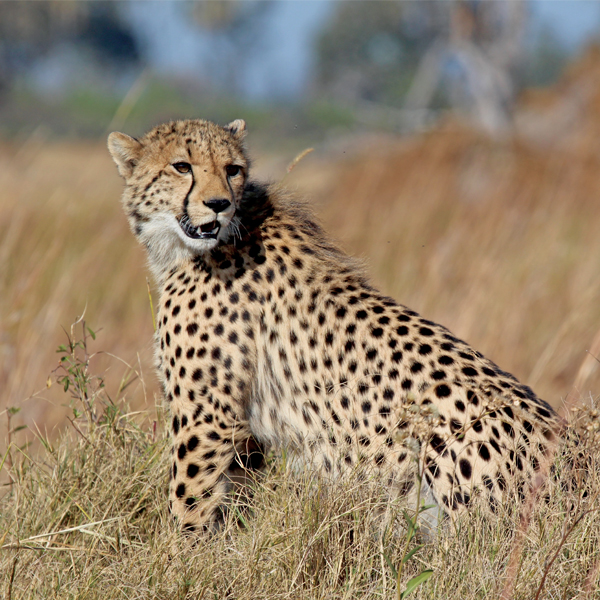
Cheetah
Cheetah
Cheetah are the most ‘fragile’ of the big cats, both in ‘build’ and in their sensitivity to the environment. They tend to prefer an open habitat where there is suitable and abundant prey (gazelles, impala and other smaller antelope species) and where they can utilise their greatest asset – speed. The Serengeti National Park in Tanzania, and the Masai Mara in Kenya are arguably the best places to see cheetah. The vast open plains with plentiful prey and endless space for them to roam provide the perfect habitat year round. However even in these areas they struggle when lion and hyaena populations become too strong.
Other areas which also offer reasonable chances for seeing cheetah include:
- Nxai Pan and Makgadikgadi Pans National Parks, and the Central Kalahari Game Reserve in the Kalahari regions of Botswana
- The Okavango Delta (including the Moremi Game Reserve) and Greater Linyanti/ Savuti regions in northern Botswana
- The Tuli Block including Mashatu Game Reserve in south-east Botswana
- The Kruger National Park, Kgalagadi Transfrontier Park and many private game reserves across South Africa
- Hwange and Gonarezhou National Parks in Zimbabwe
- The Busanga Plains region of Kafue National Park and Liuwa Plains National Park in Zambia
- Ngorongoro Crater and Ruaha National Park in Tanzania
- Liwonde National Park in Malawi (recently re-introduced)
- The Lewa and Ol Pejeta Conservancies, Amboseli National Park, Chyulu Hills, Tsavo National Park and Meru National Park in Kenya
- In Namibia cheetah are widespread and can be seen in Etosha National Park, Erindi Game Reserve, throughout the wilderness regions of north-west Namibia and at Okonjima, home of the Africat Foundation, which is involved in the protection and relocation of cheetah which are under threat from the farming community.
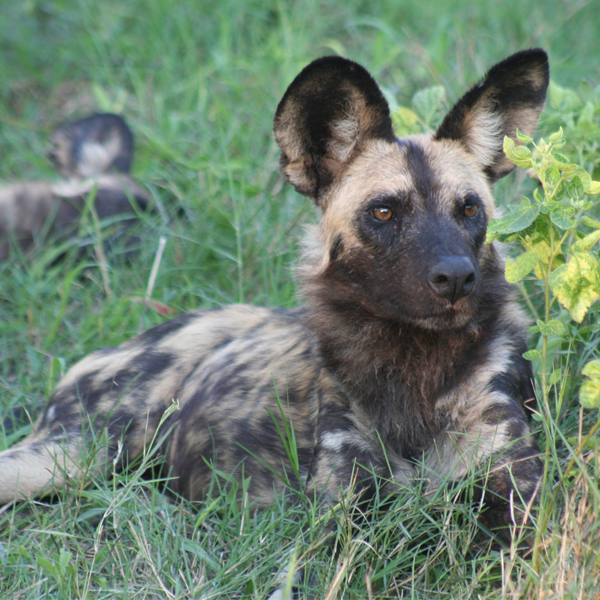
Wild dog
WilD Dog
The African Wild Dog (nowadays also referred to as Painted Wolf) is one of the great survivors. After distemper and conflict with humans threatened their mere existence at the end of the last century, they have made a remarkable recovery over much of safari Africa. The dogs move huge distances and have a nomadic lifestyle within vast ranges (except when denning), so guaranteeing that they will be in a certain area at a certain time is almost impossible. However sightings are better than ever and there are particular places where your chances of seeing them are high.
- Mana Pools National Park in north-east Zimbabwe has always been a stronghold for wild dogs and remains one of the best places to see them. They love the open riverine woodland but will also venture inland away from the Zambezi River to more remote areas of the park.
- The Greater Linyanti Region of northern Botswana, in particular the Kwando Reserve, Selinda Reserve and Linyanti Concession, offers superb opportunities.
- Also in Botswana, the Okavango Delta has always been a stronghold for wild dogs. The Moremi Game Reserve and several of the surrounding private concessions are superb for wild dog sightings.
- The Laikipia region in central Kenya holds a surprisingly large population of dogs, with several packs roaming over a huge wilderness area.
- The South Luangwa National Park in Zambia has several healthy packs and there are particular regions where they are often seen.
- In Zimbabwe, Hwange National Park, Save Valley Conservancy and Gonarezhou National Park can all offer good wild dog sightings
- For several years, the Nyerere National Park and Tarangire National Park in Tanzania have offered good sightings.
- In South Africa, the Kruger National Park and bordering private reserves have become excellent places to see wild dogs in recent years.
Other areas where it is possible to see wild dogs include the Chobe National Park in Botswana, the Zambezi National Park in Zimbabwe, The Serengeti and Ruaha National Parks in Tanzania, various private reserves in South Africa and the Lower Zambezi and Kafue National Parks in Zambia.
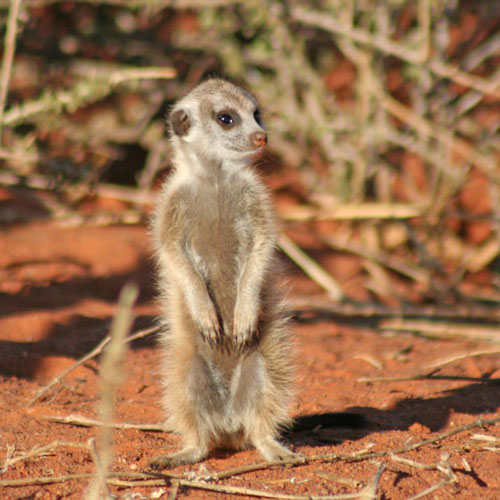
Meerkat
Meerkat
Meerkats are found throughout the arid and semi-arid desert regions of south-west Africa, with populations highest in the vast wilderness areas of the Kalahari Desert in Botswana, northern South Africa and eastern Namibia. Meerkats are also found in the Karoo Desert regions of South Africa.
If you are keen to see meerkats, there are a few very specific places where the likelihood of sightings is very high, almost guaranteed, as follows:
- The Makgadikgadi Pans, Botswana. Here a company running Jack’s Camp, along with sister camps San Camp, Camp Kalahari and Planet Baobab, have over a number of years habituated a family of meerkats to human presence. This means that if you sit outside their burrows in the early morning, you can watch them emerge without them being nervous of your presence. In fact, they are so relaxed they sometimes climb onto human onlookers and use them as vantage points! Once they become active, you are able to follow them and walk amongst them as they feed and forage.
- Tswalu Kalahari Game Reserve, north-west South Africa. This is a huge private game reserve with good populations of meerkats, where a large family of meerkats have been habituated to human presence. The experience is similar to in Makgadikgadi Pans, as you visit them in the early morning and watch them emerge from their burrows and start foraging, except that the habituation is a little less established and the meerkats don’t yet ‘climb’ on humans. The orange soil of the region makes a stunning backdrop for photographs!
- De Zeekoe Guest Farm and Meerkat Adventures, Little Karoo, South Africa. Although meerkats exist throughout the Karoo Desert, this guest farm has for a number of years offered morning excursions to visit a habituated meerkat family. Typically, you are able to watch the meerkats as they emerge from their burrows. This is probably the most accessible and affordable way to enjoy a meerkat experience.
- Bagatelle Kalahari Ranch, eastern Namibia. On the eastern extremity of the Kalahari ecosystem, this game ranch has a habituated family of meerkats close to the lodge. The owners do not advertise seeing the meerkats as a specific activity, but sightings have been consistent over several years. If you are travelling to Namibia and wish to see meerkats, then this is a place to include.

Lemur
Lemur
To see Lemurs, you must travel to the island of Madagascar – Africa’s answer to the Galapagos. The country is home to over 100 species, some to seek out are ring tailed lemurs, mouse lemurs, brown lemurs, bamboo lemurs, Verreaux’s (dancing) sifaka, Coqueril’s sifaka, black and white ruffed lemurs and the largest of all, the Indri. To speak to one of our specialists about travelling to Madagascar, please call us on +44 (0) 1787 888590 or email us via our Contact Us page. To learn more about the lemurs of Madagascar, please link through to our Madagascar pages.
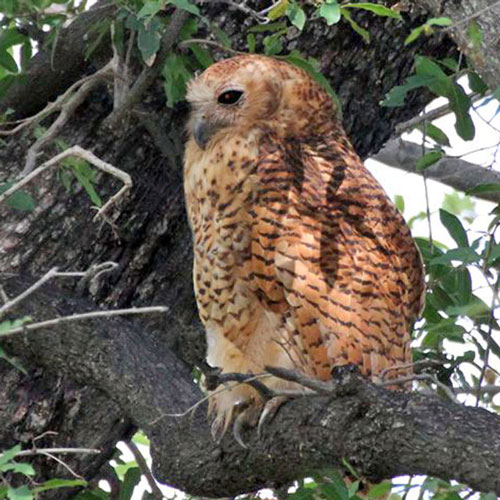
Specialist birding
Specialist birding
‘Safari Africa’ is home to over 1250 species of birds so is a natural choice for anyone with an interest in bird watching. On a good week-long safari anywhere, a keen bird watcher should easily add 200 plus species to their list. Specialist bird guides are available for hire in most areas but often the local guides are perfectly able to identify resident species. There are too many ‘sort after’ species to mention, but some of the more impressive include the Shoebill, Pel’s fishing owl, African skimmer, African finfoot, and the Carmine bee-eater.
For Shoebill the key locations include the Mabamba Swamps outside Kampala and Murchison Falls National Park in Uganda, Akagera National Park in Rwanda, or the Bangweulu Swamps in northern Zambia.
Pel’s fishing owl is best represented and easiest to see in Botswana’s Okavango Delta, including the northern reaches known as the ‘pan handle’, though they can also be seen along Africa’s other great waterways. African skimmers are also found in Botswana’s Okavango Delta (especially up on the Okavango panhandle) but can also be seen in other wetland habitats such as along the shores of the Shire River in Malawi’s Liwonde National Park or the Rufiji River system in the Nyerere National Park.
The secretive African finfoot skulks along the densely wooded reaches of many of Africa’s great rivers, whilst the more colourful and migratory Southern Carmine bee-eaters can be seen nesting in large numbers in the exposed mud banks of Africa’s rivers, in particular the Luangwa River in South Luangwa National Park and the Zambezi River in Lower Zambezi or Mana Pools National Parks.
Whatever your level of interest in bird watching, we can help design a trip that meets your expectations and requirements, teaming you up with specialist local guides as required. Please call us on +44 (0) 1787 888590 to talk through your requirements with one of our specialists, or email us via our Contact Us page.
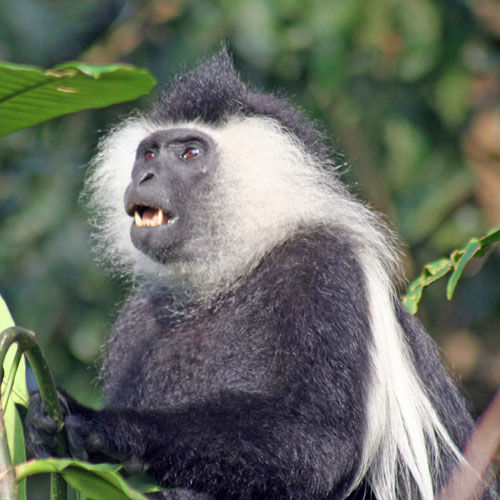
Lesser primates
Lesser primates
Gorillas and chimpanzees may take the ‘lions share’ of attention in the primate world but across East Africa in particular, there are a wide variety of amazing primate species and the island of Madagascar is home to the lemurs, which are found nowhere else on earth. Some of the species you can seek out include Golden, Red-tailed, Blue, L’Hoests and Vervet monkeys, Black and White Colobus, Red Colobus, and various species of baboon. When it comes to lemurs, there are over 100 known species.
For more information on the different primates found in Africa, and where to see them, please link through to our Gorillas & Other Primates page. In general, the best countries to consider for primate viewing are Uganda, Rwanda, Tanzania and for lemurs, Madagascar.
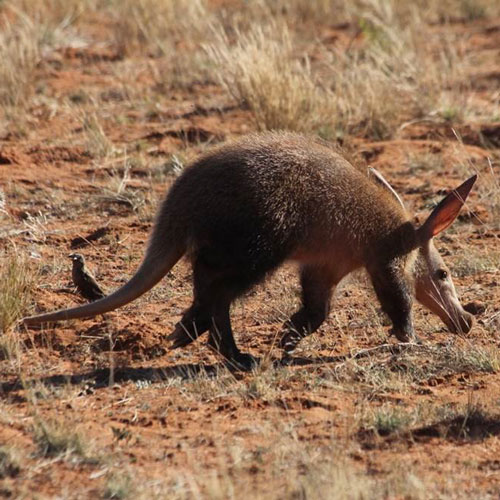
Rare / nocturnal species
Rare and/or nocturnal species
Once you have been on a few safaris, there are certain species that you realise you have ‘heard about’ but perhaps not seen. Many of them are nocturnal, which might explain why they are hard to see, but others are simply very difficult to find. Species that tend to attract special interest due to the rarity of sightings include aardvark, aardwolf, pangolin, honey badger, serval, caracal, meerkat, African wild cat, brown and striped hyaena, civet, bat-eared fox, Cape fox, sitatunga, gerenuk, sable and roan antelope. Many of the nocturnal creatures are not especially rare, and can be seen quite easily on night drives across Africa, such as honey badgers, civets or servals. Others may not be nocturnal but only tend to be found in certain habitats, such as the gerenuk, meerkat, sitatunga, sable and roan antelope – which means it is mainly a case of going to the right areas, though sightings can never be guaranteed.
However, species such as pangolin, brown hyaena, caracal and aardvark are extremely rare to see, even if you are in the right place and out half the night looking for them! In order to see the rarer nocturnal creatures you need a lot of luck, but you also need to visit the right areas and be able to undertake night drives. The woodlands of Zambia’s South Luangwa and Lower Zambezi National Parks and Botswana’s Greater Linyanti and Okavango Delta regions are fantastic for all round night drives. However for the more specialist species it tends to be the remote regions of the Kalahari Desert that offer the best chances and two particular areas to consider for ‘rarities’ are the Makgadikgadi Pans in Botswana, and the Tswalu Kalahari Game Reserve in South Africa’s northern Cape.
Please do not hesitate to call us on +44 (0) 1787 888590 to discuss where you can see any of these species, or email us your requirements via our Contact Us page.
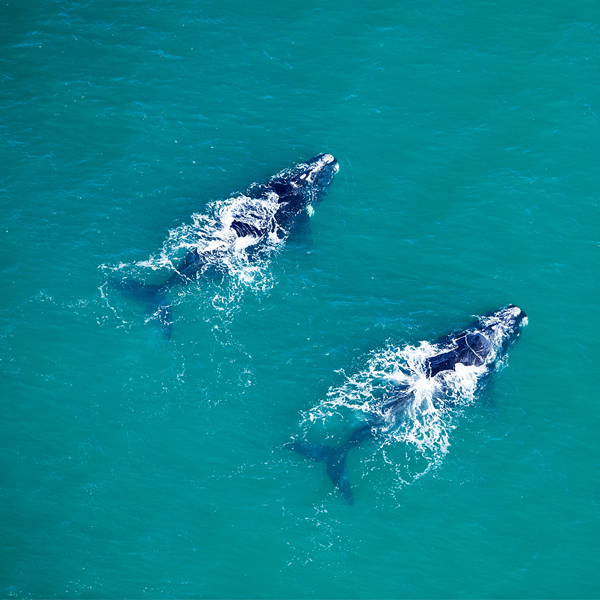
Marine wildlife
Marine wildlife
The coastal regions of Africa hold a huge array of fascinating natural life. Here are a few examples of the ‘big game’ species that can be seen in the ocean:
Whales – Southern Right whales calve of the south coast of South Africa from late June through to November offering some of the best whale-watching in the world. Humpback whales can most easily be seen off the coast of Mozambique and Madagascar between August and November. Whales can be seen from either the shore or from a boat.
Whale Sharks – one of the ocean’s most beautiful and almost mystical creatures, whale sharks can be seen along the coast of East Africa, in particular off Tanzania’s Mafia Island between November and February, and at various places in Mozambique, including Inhambane. Whale sharks are usually seen whilst snorkelling.
Sharks – White Sharks are found in huge densities off South Africa’s western Cape coastline, and ‘cage diving’ offers the chance to see these great predators up close and personal. Other sharks are prevalent throughout the Indian Ocean, and it is possible to see good populations of grey reef sharks off Mozambique and the Seychelles, and ragged tooth sharks off the KwaZulu Natal Coast of South Africa. With the exception of cage diving, it is usually necessary to scuba dive to see sharks.
Manta Rays congregate in limited areas along the East Africa coast, one of the key regions is Inhambane in Mozambique. Scuba diving is usually required to see them but they can occasionally be seen whilst snorkelling.
The ‘Sardine Run’ occurs from June to August each year off South Africa’s Wild Coast heading up to the ‘dolphin coast’ in KwaZulu Natal. During this time, millions of sardines are forced inshore followed relentlessly by predators – sharks, dolphins, sailfish and tuna fish. In some years, there are so many fish that you can ‘fish’ for them using whatever you like (buckets, pillow cases, towels etc.) in 6 inches of water!
Dolphins can be found along the whole coast of East and Southern Africa and around the Indian Ocean Islands. Snorkelling with dolphins is possible off Kenya, Mauritius and Zanzibar but it is unregulated. Although not hard to see, dolphins are always such a pleasure to encounter, whether you are on a boat or snorkelling or scuba diving.
Hawksbill, Green, Loggerhead and Leatherback turtles nest throughout the Indian Ocean Islands of Seychelles and Madagascar as well as along the main African coastlines of South Africa, Mozambique, Tanzania and Kenya.
If you are interested in including some marine wildlife within your safari holiday, please call us on +44 (0) 1787 888590 to discuss where they can be seen, or email us your requirements via our Contact Us page.


